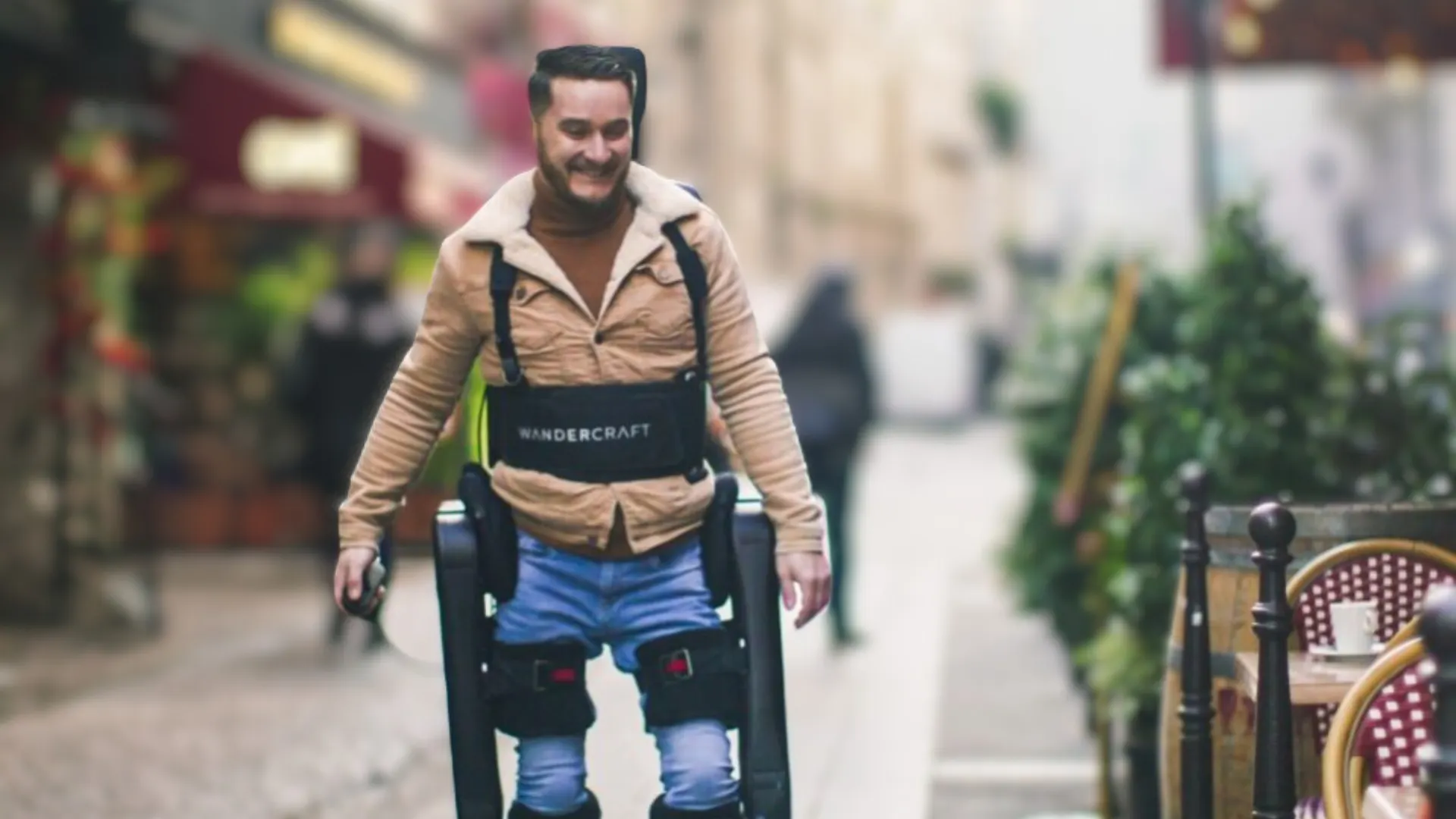Cutting-edge robotics are having a moment at the 2024 Paris Olympics, with para-athlete Kevin Piette—who was left without the ability to use his legs after a car accident 11 years ago—carrying the Olympic torch while wearing an exoskeleton designed by French engineering company Wandercraft.
Founded in 2012, Paris-based Wandercraft develops exoskeletons for medical and personal use. Their flagship exoskeleton, Atalante X, is used in rehabilitation centers worldwide to help patients regain mobility.
“Self-balancing robotics or self-balancing devices is one of robotics' toughest challenges,” a Wandercraft spokesperson told Decrypt. “So we decided to tackle that challenge, not just with a self-balancing humanoid but putting the world's most vulnerable population of people in it, which is people who can't move their legs.”
While Piette did not qualify to compete in France, he still wanted to participate in the Olympic ceremony.
Kevin Piette, a paraplegic, made history by carrying the #Olympic flame using this exoskeleton! #Olympics #OlympicGames pic.twitter.com/RxXkcr2Ncx
— Evan Kirstel #B2B #TechFluencer (@EvanKirstel) July 25, 2024
“Kevin is the number 10 wheelchair tennis player in France, but he didn't qualify for the [Paralympics],” the spokesperson said. “But he still wanted to walk in the Olympic torch relay, and the Olympic Committee was kind enough to think he would be a good fit for that.”
As the Wandercraft spokesperson explained, the company’s “personal exoskeleton,” currently in development, is being designed for everyday use.
“The goal would be for a user to wear it for a full workday,” the spokesperson said, noting that the aim is to have the suit sit, stand, and step side to side, as well as other motions. “You'll get about four hours of life in the prototype device when taking all those actions, but the goal is for a user to get through an entire workday,” they said.
Long the stuff of science fiction—as seen in movies like “Aliens,” “Elysium,” “Edge of Tomorrow,” and the “Iron Man” series—Wandercraft has worked with the California Institute of Technology (CalTech) to develop its functioning exoskeleton technology and make it a reality.
“The goal is to get people out of wheelchairs,” Caltech Professor Aaron Ames told Decrypt in an interview. “It turns out that even locomoting in a clinical setting has positive health benefits. Getting up and moving has a lot of positive benefits, and then beyond that, the ultimate goal is an exoskeleton that can enable mobility in everyday life and everyday situations.”
As Ames explained, the exoskeletons move based on algorithms programmed into the suit and directed based on how the wearer moves their torso.
“This is targeted at complete paraplegics, and the torso is the mechanism for which you can dictate some control,” Ames said. “Think about it as a bit of a joystick: if you want to go forward, you could lean forward, and the [exoskeleton] will say, ‘Okay, you want to walk forward, that's your choice.’”
Ames added that the suit also includes a conventional joystick for directional commands.
A Professor of Mechanical and Civil Engineering Control and Dynamical Systems, Ames’ research and work with Wandercraft led to the creation of CalTech’s Robotic Assisted Mobility (RoAM) initiative.
“We can do the cutting-edge stuff, and we can try out new ideas at Caltech and put it on [Wandercraft’s] exoskeleton with their collaboration,” Ames said. “It was an important moment when we were able to show this first-of-a-kind thing, and these are the moments you keep pushing for.”
Exoskeletons are not cheap, but thanks to new policies for those in the United States who may want to purchase assistive technology, there is help to offset the yet-to-be-determined price tag after Medicare issued a final ruling that will reimburse the exoskeletons.
Earlier this week, Keontae Clark became the first person in the San Francisco Bay Area to receive an exoskeleton suit through her health insurance, California media outlet KRON4 reported on Wednesday. According to the report, her exoskeleton cost $100,000.
Edited by Ryan Ozawa.

